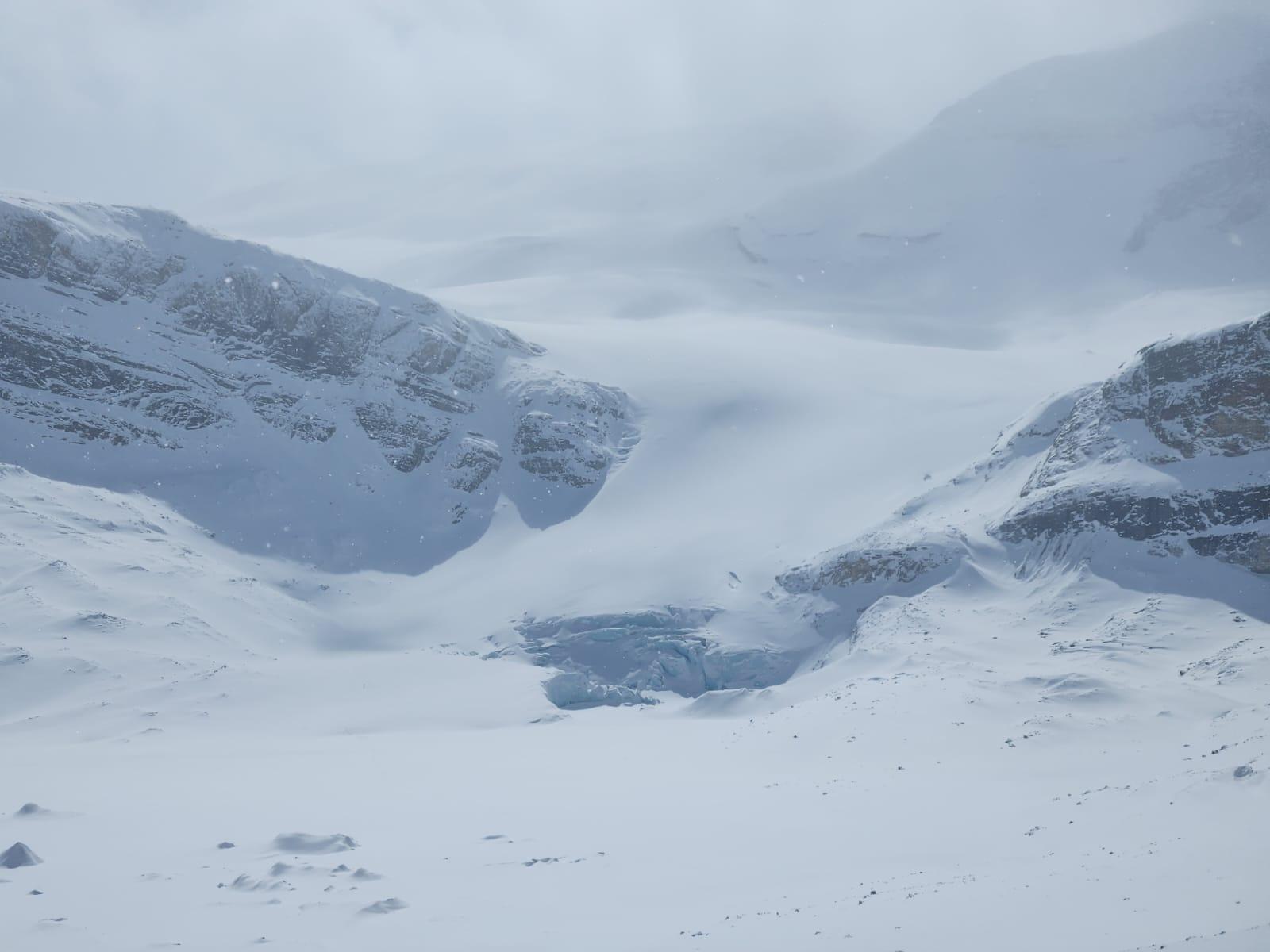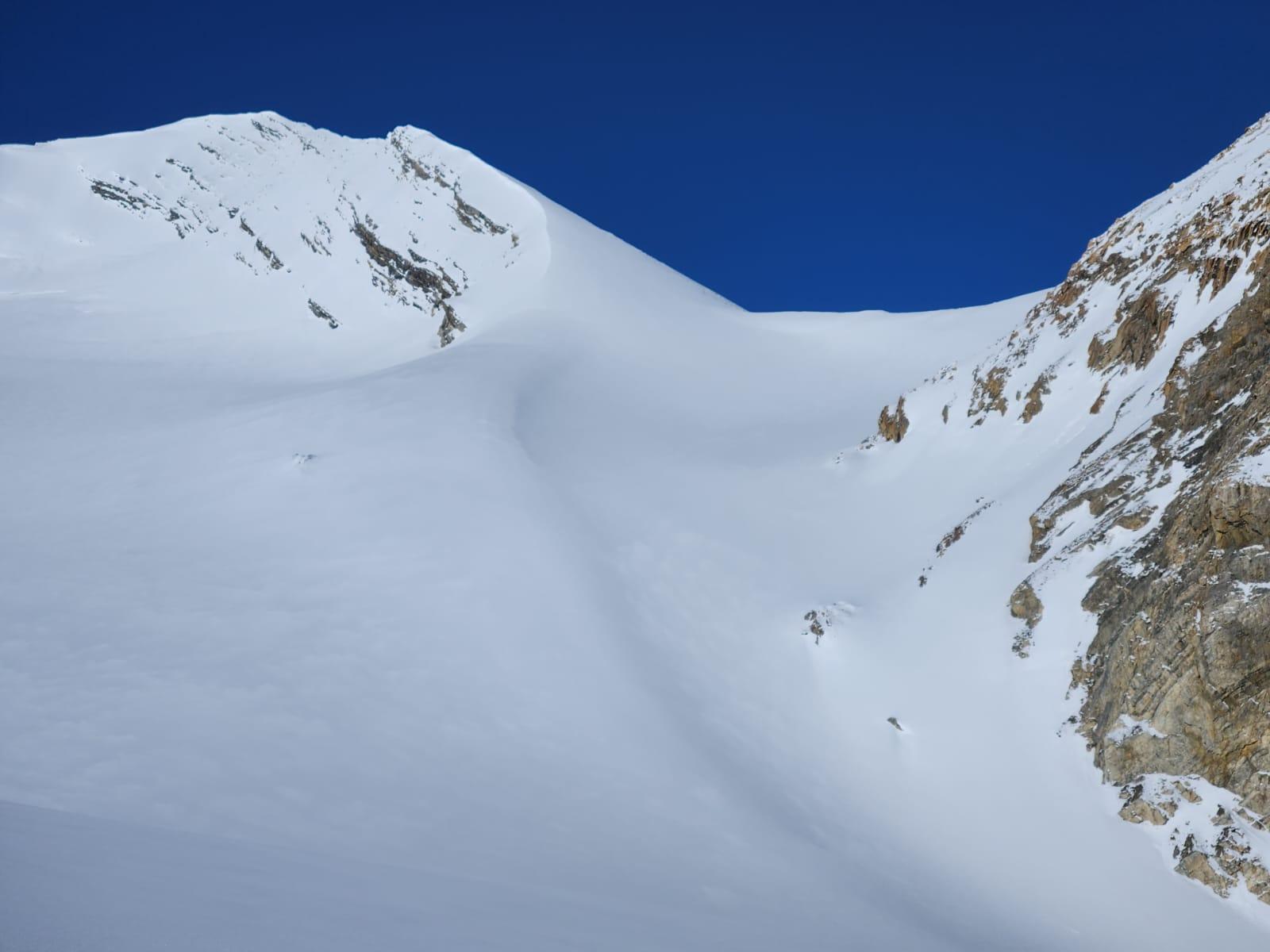Conditions Report from the March 23rd-29th Apprentice Ski Guide Exam
Rogers Pass and the Wapta Icefield
From March 23-29, the ACMG Apprentice Ski Guide Exam skied in Glacier, Yoho, and Banff National Parks. Specifically, objectives included Bruin’s Glacier, Sapphire Col, Lily Traverse, Dome Traverse, Young’s Traverse, Pearly Rock, Bonney Glacier, Mt. Field and the Northern Wapta Icefield including the Peyto approach, Bow Hut approach, Mt. Collie, Wildcat Glacier, and circumnavigation of Mt. Gordon.
Despite heavy traffic, travel through lower elevation terrain was straight forward. Variable conditions made for challenging skiing transitioning from treeline to alpine on all aspects. Ski objectives focused on finding preserved snow in sheltered polar aspects. We avoided thick to thin alpine features and steep solar slopes.
Weather:
Selkirks: The first half of the course (March 23-25th) started with high pressure in the Rogers Pass. On the 24th and 25th there was some convective weather which produced light flurries up to 15cms. There were mild temps approaching 0 degrees during the days and good overnight freezes. We experienced strong solar impact which resulted in moist snow and crusts to ridge top on solar aspects. Sheltered polar aspects remained soft with faceted boot top snow. Winds were generally calm with periods of light westerlies in the alpine.
Rockies: Morning flurries cleared to 3 days of high pressure by the afternoon of March 27th. Temperatures remained cold ranging between -6 during the day and -18 in the evenings. Clear skies and calm to light winds made traveling in the sun very pleasant. The sun packed a punch and made for moist surfaces on steep solar aspects. Light north winds and cool temperatures helped to preserve the surface snow in all other areas.
Avalanche Problems:
Selkirks: We were mindful of two avalanche problems, the Nov 17th Deep Persistent Slab, and the March 11th Persistent Slab. We experienced an improving trend in snowpack stability over this period from generally stable weather and minimal snow inputs; with this in mind we felt this led to a decreasing trend in the likelihood of triggering both problems and our hazard rating trended to 2/1/1. Given the extent of previous compaction, we were able to ski many different aspects and elevation bands and were more wary of unmodified slopes. No significant avalanche observations were noted during our time here.
Rockies: While travelling in Banff and Yoho National Parks on the Wapta Icefields our primary concerns were persistent slabs (early January interfaces) and the November 17th deep persistent slab. Both of these problems were forecasted to be low probability but high consequence avalanches. The January problems were of particular concern on solar aspects and on thick to thin transitions. Both avalanche problems were managed primarily through terrain selection, sticking to deeper and well-supported features. While we were in the field, daytime warning led to natural loose wet avalanches up to size 2 on steep solar terrain below treeline; this problem is predicted to persist as we move towards spring diurnal cycles. We also noted several old deep persistent slab releases in steep shallow rocky alpine features.
Other Pertinent Observations:
On the Wapta Icefield we observed extensive scouring on wind-exposed features, revealing bare glacial ice and overall thin coverage. Low snowpack coverage on the upper Ferris Glacier revealed textured ice historically not seen. There is a notable change in the snowpack both at lower elevations and East of the Divide being more shallow than the West.
There are a couple photos of the Peyto Glacier approach and the Baker/Trapper col for those who may be headed that way
Safe travels and enjoy the spring conditions!
Mike Adolph, Kirsten Knechtel, Darek Glowacki, Conrad Janzen and the candidates from the Apprentice Ski Guide exam


